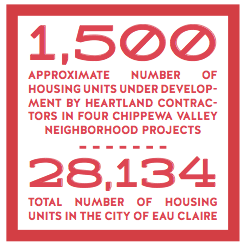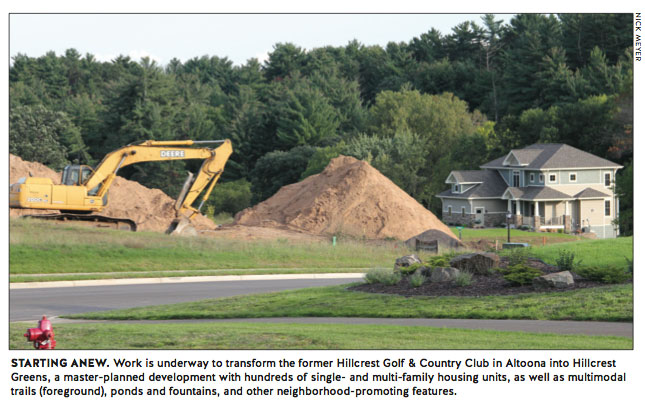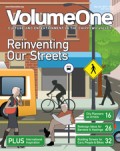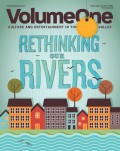BUILDING A SOCIAL SPACE
While some of us may live in new houses on new streets, most of us reside in places that began developing their character long before we arrived. These neighborhoods – whether officially defined or otherwise – are where we make our homes. And, just as surely as the shape of a new neighborhood depends on a developer, the shape and continued vitality of our existing neighborhoods depends on us.
While neighborhood associations have existed in larger cities for the better part of a century, they weren’t formed in Eau Claire until the 1970s, when five were created. More were incorporated in the latter half of the ’90s, and today there are 18 (although two are officially listed an inactive and several more are moribund).

Pat Ivory, who has worked closely with neighborhood associations during his 30-year career with the city Department of Community Development, said these associations have typically been formed when an issue crops up that catalyzes residents. (For instance, he explains, the Historic Randall Park Neighborhood Association was formed in the ’70s to address the rising tide of student rentals in the neighborhood.) Sometimes interest in the association fades after the issue goes away, but sometimes the organization is strong enough to withstand the test of time.
“It’s a proactive group representing an area looking out for the best interests of that area,” Ivory says when asked to define a neighborhood association. “It provides a great way of providing communication within that area and to outside groups,” such as the city or the school district, he adds. Furthermore, neighborhood associations provide a great social outlet for people through picnics, thrift sales, and park projects. And Ned Noel, also an associate city planner, adds that having a neighborhood association “builds social cohesion in a neighborhood, whether it’s crime prevention or building trust.”
Longstanding groups like the Eastside Hill Neighborhood Association have done all of those things. Mark Wesenberg, who has lived in the neighborhood since 1978, was one of those who founded the group in 1997. (He’s also served as its president and now sits on the steering committee.) While at the time there were no acute problems that motivated Eastside Hill residents to band together, Wesenberg says he and others were generally concerned because older neighborhoods like theirs were beginning to deteriorate even as the city invested in expansion on its fringes.
The formation of the group proved fortuitous: No sooner had it been born than the city announced plans to remove the footbridge across the Eau Claire River between Boyd Park and Banbury Place. “The structure was there,” Wesenberg says of the association, “and we just kind of went with it. We actually had quite an impact, because we ended up not being able to save the bridge, but we got a new bridge.”
“It doesn’t matter what your politics are. When it comes down to it, all we’re trying to do in the neighborhood association is make the neighborhood the most livable place we can.”
Mark Wesenberg, EASTSIDE HILL NEIGHBORHOOD ASSOC.
Soon after, the need to replace Boyd School arose as a neighborhood-dividing issue, and the association played a role again. The group filed a successful protest petition with the City Council to block the planned conversion of the former school into apartments (the neighborhood association preferred condominiums, and eventually the group’s attorney helped write the bylaws for the condominium association). And while the decision to build the new Flynn school on the site of an existing neighborhood playground was controversial, Wesenberg says the money the city received from the sale of the land ended up help the Eastside Hill in the form of improvements to Boyd Park.
Of course, the association has done far more than serve as a vehicle for residents’ activism in hot-button community issues. It’s sponsored a huge thrift sale, organized successful picnics, and helped create a prairie on a former parking lot next to Boyd Park. Wesenberg believes these and other efforts and amenities have helped draw new, young families to the Eastside Hill – families who may not recognize the past achievements of the neighborhood association. “To them, this is the way it’s looked always,” Wesenberg says of newer residents. “I think they like these things. Maybe that’s why the neighborhood attracted them.”
Neighborhood associations exist, Wesenberg concludes, to respond to the desires of those who are willing to put in the effort to improve their surroundings. “For me, we’re all in this together in the neighborhood,” he says. “It doesn’t matter what your politics are. Because when it comes down to it, all we’re trying to do in the neighborhood association is make the neighborhood the most livable place we can.”





